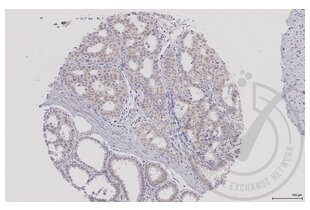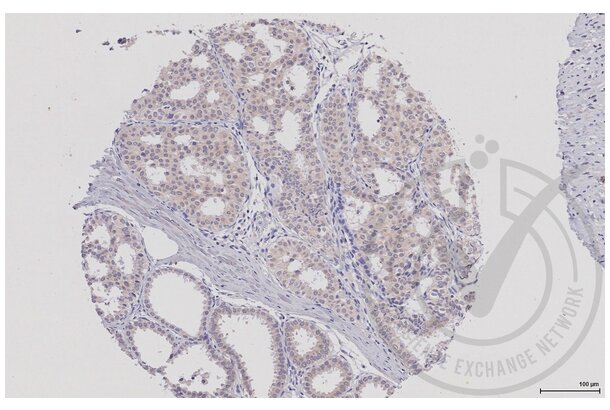MAP2K5 Antibodies
Your search for reliable MAP2K5 antibodies ends here. MAP2K5, known by aliases such as Map2k5, MAP2K5, map2k5, map2k5.L, MKK5, is an integral part of our antibody range. Whether you're working with Human, Mouse, Rat, Dog, Cow, or other species, our range of MAP2K5 antibodies offer precise detection across diverse samples. These specialized antibodies are tailored for various scientific applications like WB, IF (cc), IF (p), ELISA, IHC (p), providing you with options like polyclonal, recombinant, and monoclonal antibodies, sourced from different host species such as Rabbit, Mouse. The efficacy of our antibodies is well-established, demonstrated through multiple methods.
Detailed information, including references, images, and validations by other customers, can be found on each product page. Should you require assistance in finding a specific product, our customer service team is ready to assist. Utilize our MAP2K5 antibodies in your research endeavors for dependable MAP2K5 detection.

 MAP2K5 antibody (AA 251-350) (ABIN754183)
MAP2K5 antibody (AA 251-350) (ABIN754183)
MAP2K5 Reactivity: Human, Mouse, Rat WB, ELISA, IF (cc), IF (p), IHC (p), IHC (fro) Host: Rabbit Polyclonal unconjugated
MAP2K5 Reactivity: Human WB, ELISA, IF Host: Mouse Monoclonal M1-E6 unconjugated
MAP2K5 Reactivity: Human WB, ELISA, IF Host: Mouse Monoclonal 1B4 unconjugated
MAP2K5 Antibodies by Host
Find MAP2K5 Antibodies with a specific Host. The Host listed below are among those available. Click on a link to go to the corresponding products.
MAP2K5 Antibodies by Clonality
Find available monoclonal or polyclonal MAP2K5 Antibodies. Click on a link to go to the corresponding products.
MAP2K5 Antibodies by Clone
Find MAP2K5 Antibodies with a specific Clone. The Clone listed below are among those available. Click on a link to go to the corresponding products.
Popular MAP2K5 Antibodies
- (2)
- (3)
- (1)
- (6)
- (4)
- (3)
- (3)
- (2)
- (2)
- (2)
- (3)
- (1)
- (1)
- (1)
- (1)
- (1)
- (1)
Latest Publications for our MAP2K5 Antibodies
: "Melittin inhibits proliferation, migration and invasion of bladder cancer cells by regulating key genes based on bioinformatics and experimental assays." in: Journal of cellular and molecular medicine, Vol. 24, Issue 1, pp. 655-670, (2021) (PubMed).: "MicroRNA-143 regulates adipogenesis by modulating the MAP2K5-ERK5 signaling." in: Scientific reports, Vol. 4, pp. 3819, (2014) (PubMed).
: "Fatty acid synthase mediates the epithelial-mesenchymal transition of breast cancer cells." in: International journal of biological sciences, Vol. 10, Issue 2, pp. 171-80, (2014) (PubMed).
: "Effects of MEK5/ERK5 association on small ubiquitin-related modification of ERK5: implications for diabetic ventricular dysfunction after myocardial infarction." in: Circulation research, Vol. 102, Issue 11, pp. 1416-25, (2008) (PubMed).
: "Differential role of MEK5alpha and MEK5beta in BMK1/ERK5 activation." in: The Journal of biological chemistry, Vol. 279, Issue 2, pp. 1506-12, (2004) (PubMed).
: "MEK5 and ERK5 are localized in the nuclei of resting as well as stimulated cells, while MEKK2 translocates from the cytosol to the nucleus upon stimulation." in: Journal of cell science, Vol. 117, Issue Pt 9, pp. 1773-84, (2004) (PubMed).
: "MEK5 overexpression is associated with metastatic prostate cancer, and stimulates proliferation, MMP-9 expression and invasion." in: Oncogene, Vol. 22, Issue 9, pp. 1381-9, (2003) (PubMed).
: "MEK/ERK pathway is aberrantly active in Hodgkin disease: a signaling pathway shared by CD30, CD40, and RANK that regulates cell proliferation and survival." in: Blood, Vol. 102, Issue 3, pp. 1019-27, (2003) (PubMed).
Aliases for MAP2K5 Antibodies
mitogen activated protein kinase kinase 5 (Map2k5) Antibodiesmitogen-activated protein kinase kinase 5 (MAP2K5) Antibodies
mitogen-activated protein kinase kinase 5 (Map2k5) Antibodies
mitogen-activated protein kinase kinase 5 (map2k5) Antibodies
mitogen-activated protein kinase kinase 5 L homeolog (map2k5.L) Antibodies
MAP kinase kinase 5 (MKK5) Antibodies
AI324775 Antibodies
AI428457 Antibodies
ARABIDOPSIS THALIANA MITOGEN-ACTIVATED PROTEIN KINASE KINASE 5 Antibodies
ATMAP2K_ALPHA Antibodies
ATMEK5 Antibodies
ATMKK5 Antibodies
fb73f02 Antibodies
HsT17454 Antibodies
MAP2K_A Antibodies
MAP KINASE KINASE 5 Antibodies
MAP kinase kinase 5 Antibodies
MAPKK5 Antibodies
Mapkk5 Antibodies
Mek5 Antibodies
MEK5 Antibodies
PRKMK5 Antibodies
Prkmk5 Antibodies
wu:fb73f02 Antibodies
zgc:172137 Antibodies
Did you look for something else?
- MAP2K3 Antibodies
- MAP2 Antibodies
- MAP1S Antibodies
- MAP1LC3B2 Antibodies
- MAP1LC3A Antibodies
- MAP1D Antibodies
- MAP1B Antibodies
- MAP1A Antibodies
- MAP1 Antibodies
- MAO Antibodies
- MANSC1 Antibodies
- Mannosyl (Alpha-1,3-)-Glycoprotein beta-1,2-N-Acetylglucosaminyltransferase Antibodies
- Mannose-P-Dolichol Utilization Defect 1 Antibodies
- Mannose Receptor Antibodies
- Manic Fringe Antibodies
- MANF Antibodies
- MANEA Antibodies
- MANBA Antibodies
- MAN2B2 Antibodies
- MAN2B1 Antibodies
- MAP2K6 Antibodies
- MAP2K7 Antibodies
- MAP3K1 Antibodies
- MAP3K10 Antibodies
- MAP3K11 Antibodies
- MAP3K12 Antibodies
- MAP3K14 Antibodies
- MAP3K15 Antibodies
- MAP3K19 Antibodies
- MAP3K2 Antibodies
- MAP3K3 Antibodies
- MAP3K4 Antibodies
- MAP3K6 Antibodies
- MAP3K7 Antibodies
- MAP3K7CL Antibodies
- MAP3K8 Antibodies
- MAP3K9 Antibodies
- MAP4 Antibodies
- MAP4K1 Antibodies
- MAP4K2 Antibodies




